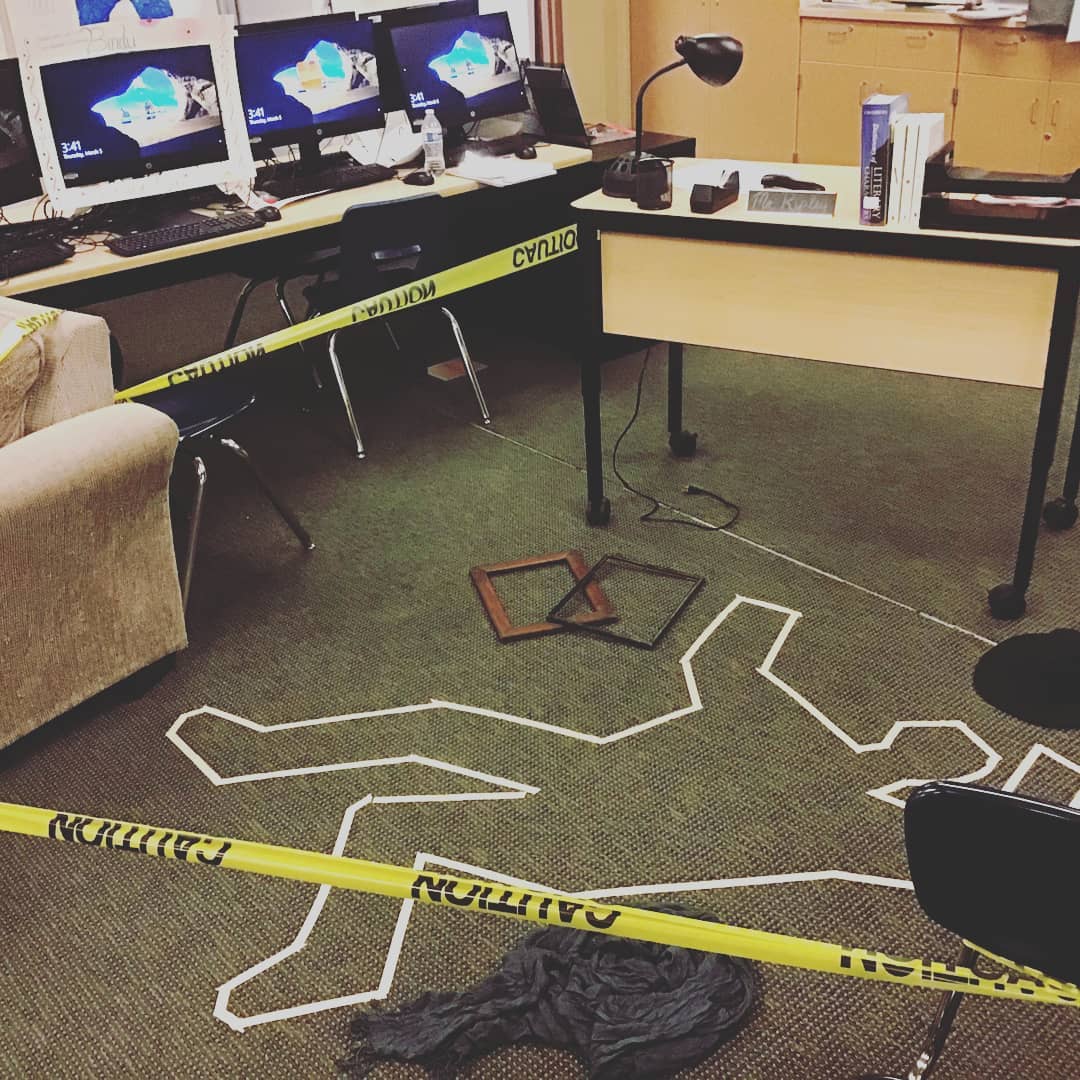|
So... is anyone else absolutely sick of working from home? (Like... so sick that you miss wearing actual clothes even). We are officially at one week of no school, but we cannot begin instruction until next week, Wednesday. And as you likely know, we won't have much more clarity on the test until next Friday. And as you also know, we have no idea if/when/how we'll return to "normal." If you are like me, this all means that you are just spinning your wheels until you know what direction you should be going in. Before the announcement to close and the consequent updates from College Board, I was planning to create and dish out a multitude of online units to help you all out. Now - since I have no idea which question will be selected for the test - I'm not sure what needs more focus and what can be de-emphasized. The best I can do is to wait until the April 3 update and then go HAM. However, I don't like sitting around. At all. To pass the time this week, I am planning on extending some of my reading assessments and figuring out new ways to tackle the reading standards. (Yes. I know there is no multiple choice on the test. I'm just creating things I know will be helpful in the future regardless). That said, earlier this year I posted a combination assignment on my Teachers Pay Teachers site which showed how to scaffold from a simple "SPACES" analysis to the more rigorous SPACECAT. Sitting around (and twiddling my thumbs today), I created one further step in that scaffold, called an Extended SPACES analysis. It is a more rigorous form of the reading assessment that pushes kids to answer more of the essential questions posted in the CED. It also aligns with the first webinar lessons College Board posted, which will focus on understanding audience and speaker relationship. Online learning will give us the rare opportunity to differentiate for our kids, and this is a tool that I hope will be helpful for you. If nothing else, I hope its something you can use sometime! Enjoy! Sincerely, Cwik
1 Comment
If you are in the AP Language and Composition group on Facebook, you have probably seen the many manifestations of The Murder of Allen Ripley activity. The basic premise is that students come in to find the room transformed into a crime scene. Then, they are tasked with solving the murder. It’s a great activity to practice synthesis and line of reasoning! (MAD Shout-Out to Patti Snowden, who created and posted the assignment). Seeing all the cool posts and reactions, I was immediately sold. As a true crime fanatic… you know, the type that falls asleep to Forensic Files every night and squeals at every new crime docuseries on Netflix… I was so excited to try this out with my class. We are jumping into our next topic unit on gun violence, so it seemed like a great way to hook them. (Again - all credit to Patti Snowden. I just tweaked an already awesome learning experience). For our version of this activity, we used two days. One day for students to act as law enforcement and study the crime scene, witness testimonies, and synthesize information to create an arrest warrant. The next day, they were handed another group’s warrant and asked to act as prosecutors or defense lawyers, composing a compelling opening argument. We use standards-based grading, so we decided to assess their opening argument on Evidence and Commentary. Here is how we describe proficiency for these opening arguments:
Now… if you haven’t figured it out yet, I am admittedly super “extra” when it comes to planning lessons like this. So in addition to the activity designed so wonderfully by Snowden, I added a few more curveballs and added bonuses. Here are some ideas (and materials) that you can take to your own classroom! SETUP
LESSON Day 1: Law The first day, students are practicing synthesis and critical thinking. They treat the case file like the sources for Question 1 on the exam and make connections to defend claims about motive, opportunity, and means of operation.
Day 2: Order The second day, students are practicing on-demand persuasive writing. They are also encouraged to engage in counterargument. This practice will help with both Question 1 and 3 on the exam.
Overall, I'd say it was an overwhelming success. In the afternoon of Day 1, I had students coming to class saying such gems as: "I heard English was actually fun today!" (Eye roll.) "I'm excited to solve a murder!" "Who DIED?" And after the first day, they were asking if they could put the suspects on trial. (Had it been a more convenient time - not a couple days before the big music trip to Chicago - I would have added a full mock trial.) The fact that they were so excited about argument and reasoning is such a credit to Snowden and her great activity! If you haven't already, I STRONGLY recommend you implement this in your classroom. Have a great week, all! |
Archives
February 2024
AuthorSteph Cwikla has been a teacher since 2012, focusing on ELA curriculum. Now, she also works as an instructional coach, helping other teachers improve engagement and instruction. |

 RSS Feed
RSS Feed